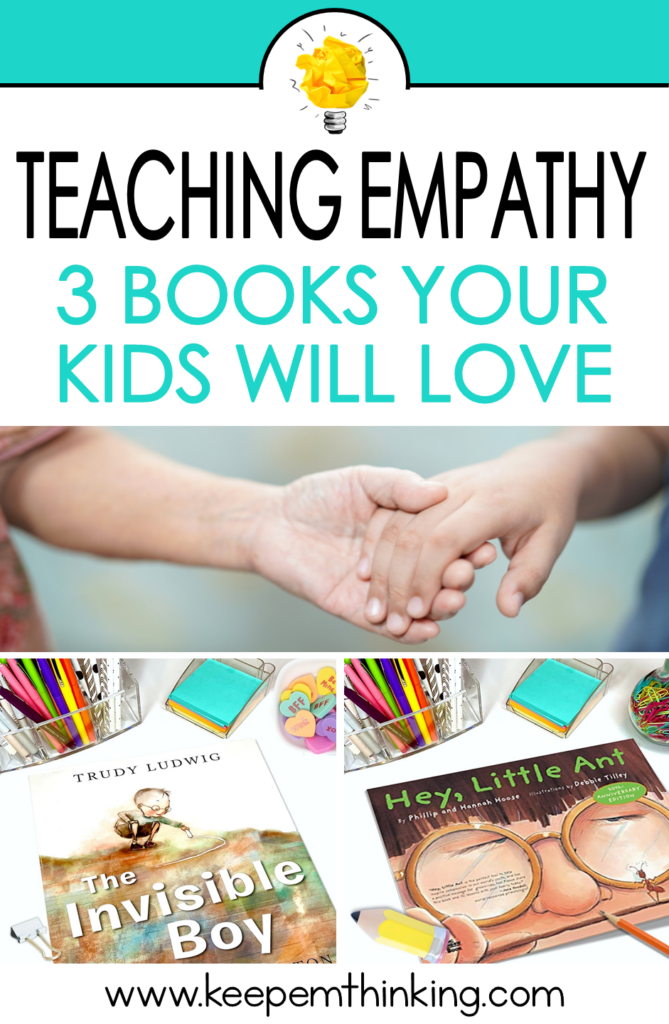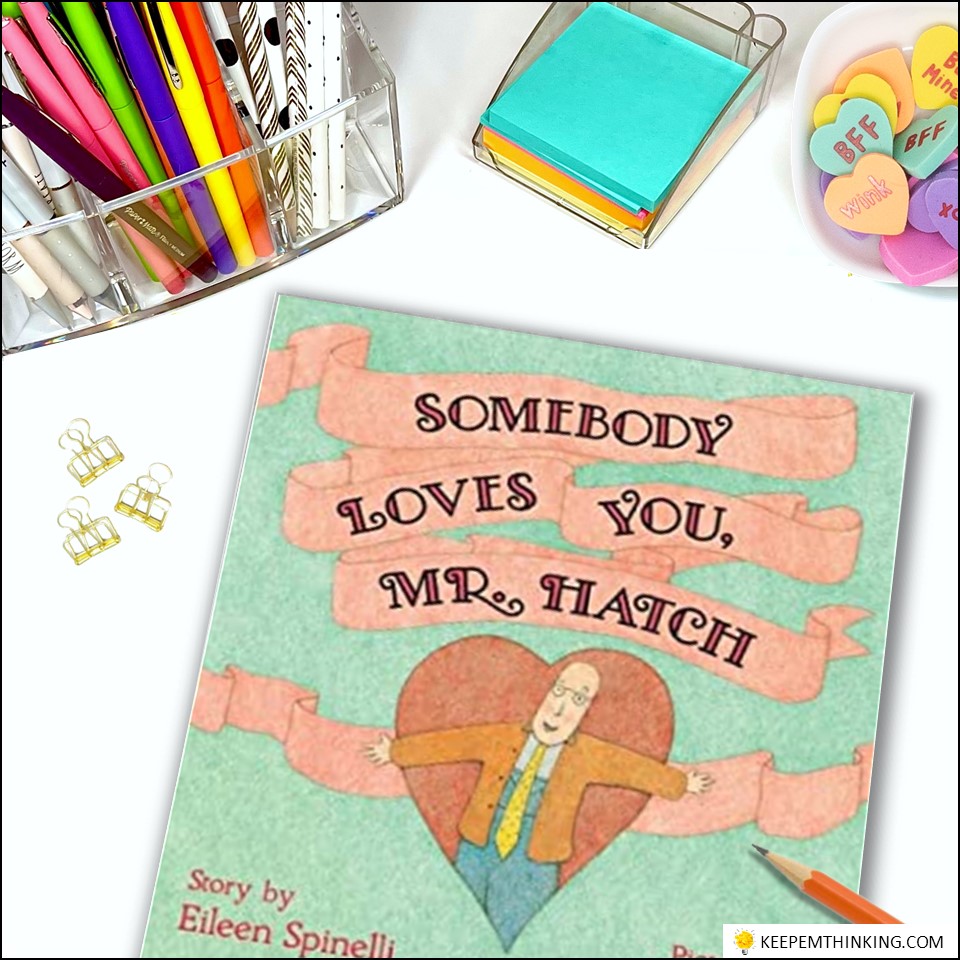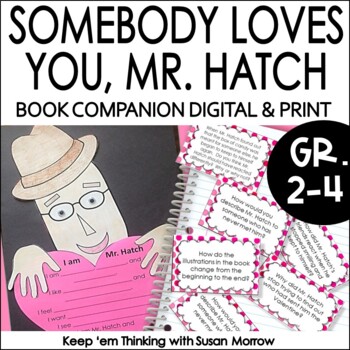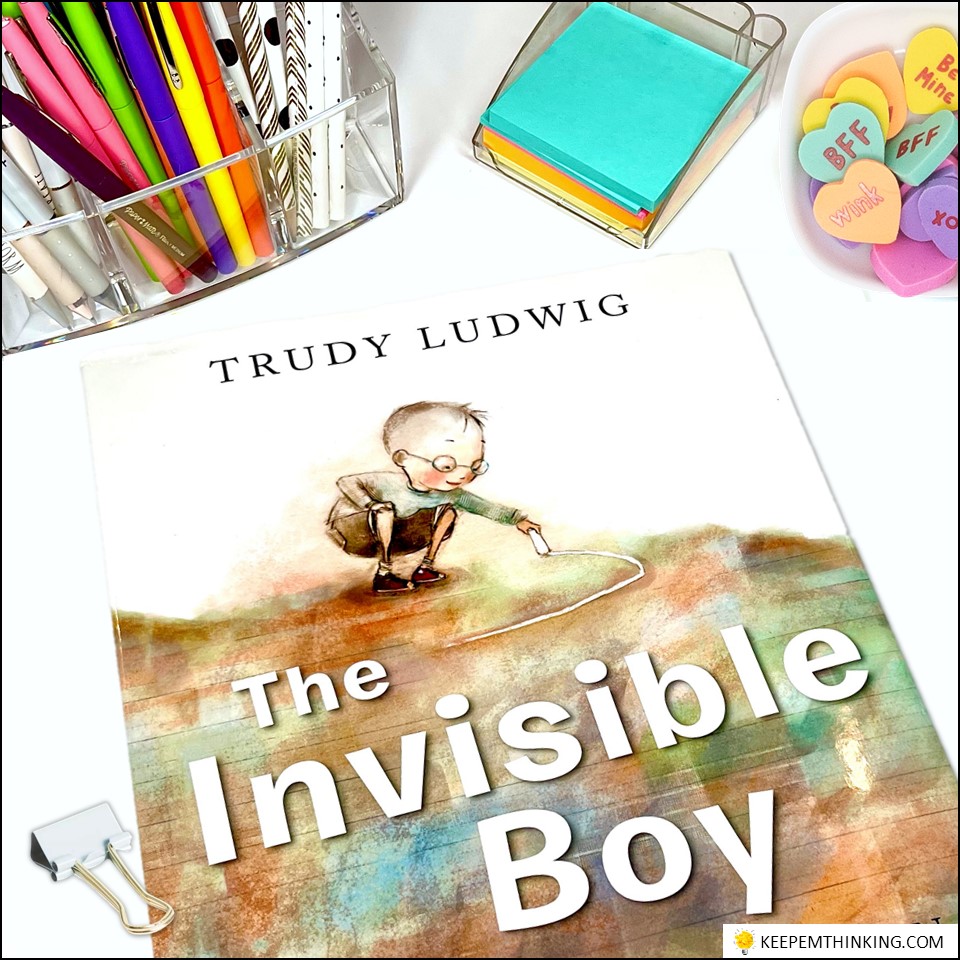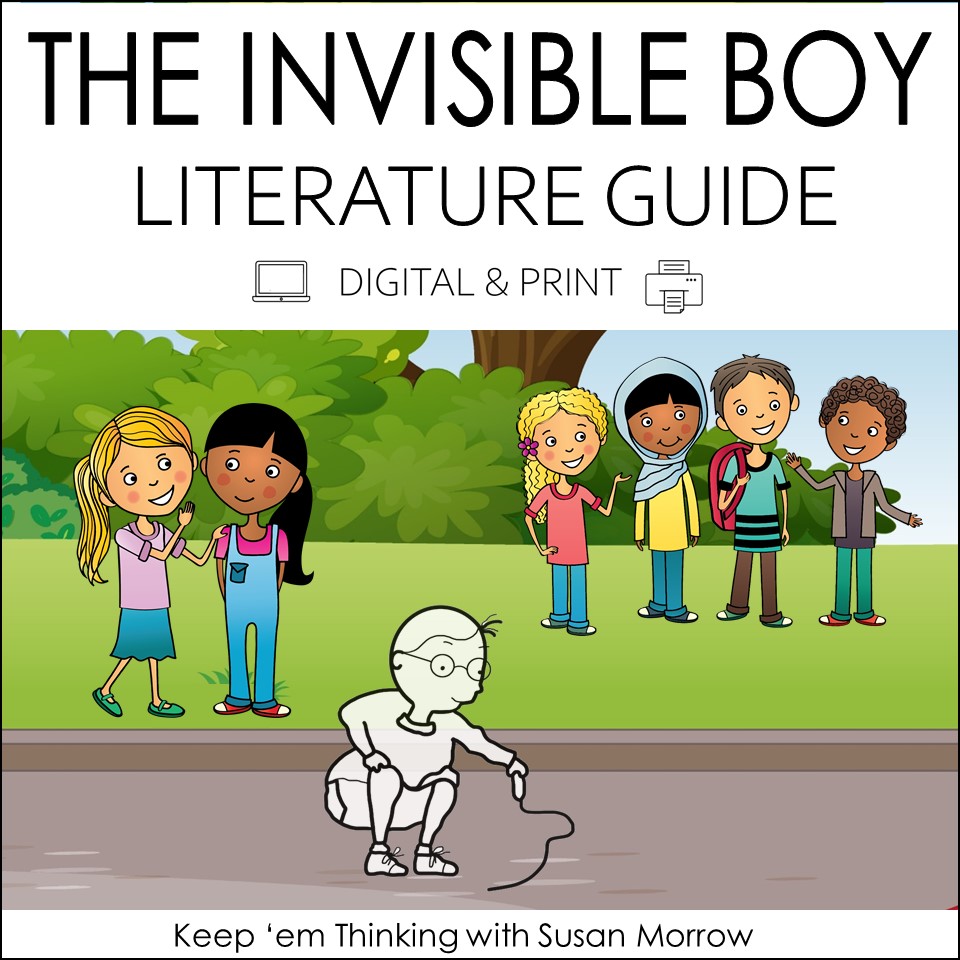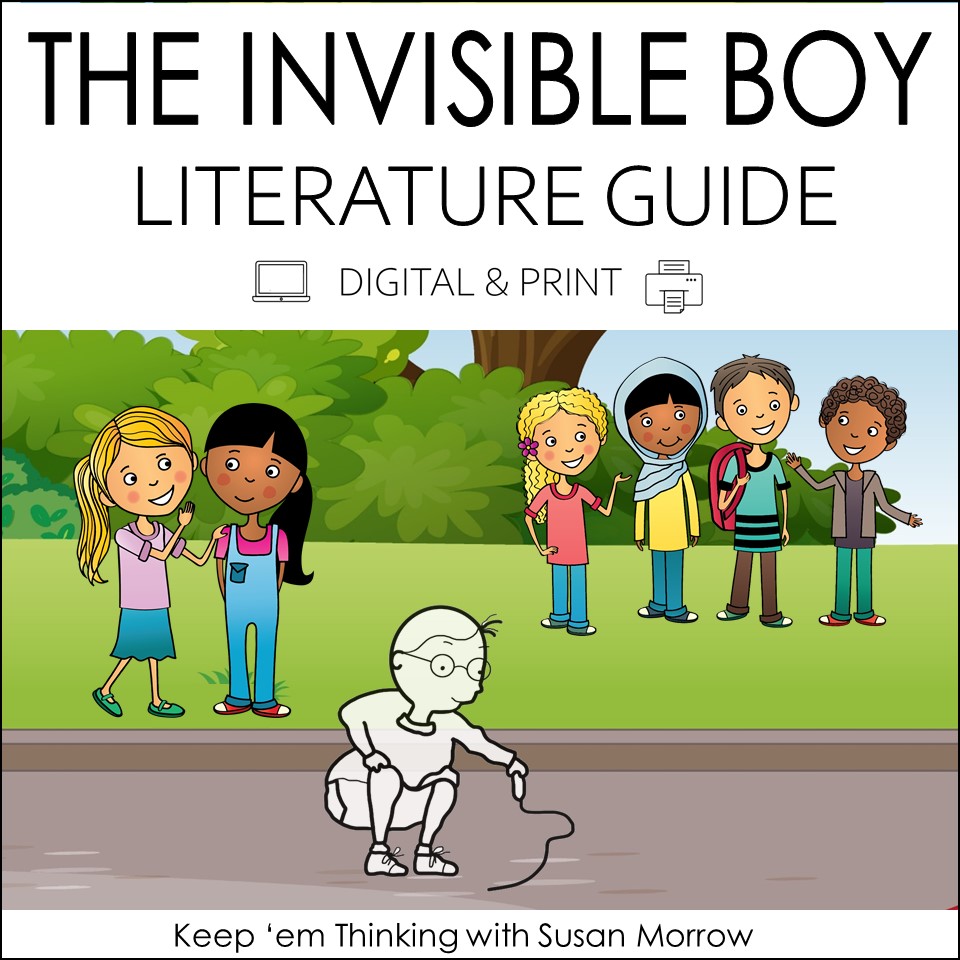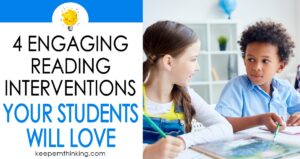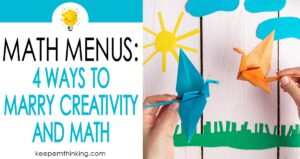SEL, the acronym for Social Emotional Learning that all educators are hearing at every turn. You know it is important. You agree that it should be addressed. But how is it possible for you to add one more thing to your already overflowing plate? Focusing on Social Emotional Learning in your classroom does not need to be overwhelming. Here are 3 powerful books and activities that you can easily use for teaching empathy.
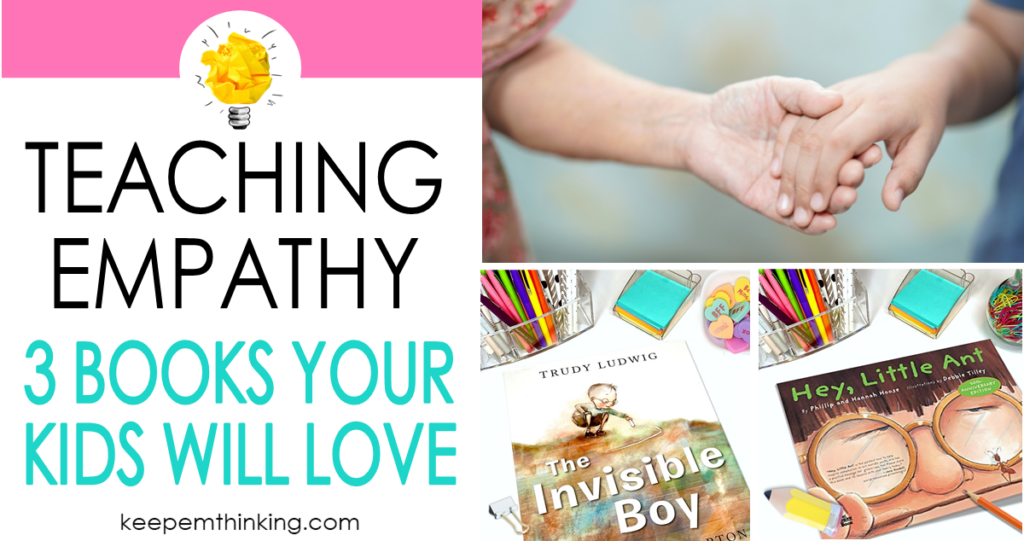
I’m here to let you know that teaching empathy, a key to social emotional development, does not need to be complicated. You already have all the tools at your fingertips: great books! Simply incorporate these books into your reading instruction or daily read alouds. Just like you are used to teaching multiple skills with one text, add the lens of social emotional learning to your lesson to weave it into your everyday routine. Here are some ideas using my favorite books that focus on empathy and kindness.
Teaching Empathy with Somebody Loves You, Mr. Hatch
In my opinion, Somebody Loves You, Mr. Hatch, by Eileen Spinelli and illustrated by Paul Yalowitz is one of the best Valentine’s Day themed books to use in your classroom. It doesn’t follow the typical narrative of other Valentine’s books. Instead, the story truly focuses on empathy and kindness.
The story follows a lonely old man, Mr. Hatch, who receives a Valentine from an unknown admirer. This act of kindness completely changes Mr. Hatch’s outlook. He breaks from his old routines and becomes active in his community spreading kindness.
This is the perfect story to show how one act of kindness can lead to many! I love how even the illustrations show the change in Mr. Hatch as they move from dull and gray to more colorful. With such a significant character change, this book makes teaching empathy a breeze!
Ways to Use Somebody Loves You, Mr. Hatch in Your Classroom

I suggest reading the story with your students and telling them to pay attention to how Mr. Hatch changes from the beginning of the story to the end. I love using a compare and contrast activity once we have finished reading to help show students the shift in Mr. Hatch so that we can use that information to discuss empathy and kindness. You can find the exact activity I use as part of my Somebody Loves You, Mr. Hatch Literature Guide!
I follow this up with a themed activity where students use details from the text to identify themes from the story. By exploring the theme, students are given a clear picture of what the story teaches about empathy which I find to be an integral part of helping them develop their social-emotional intelligence.
And just like that, you have focused on the important reading skills of character development and theme in addition to opening a discussion of empathy and kindness.
The Invisible Boy: A Story of Friendship and Empathy
The Invisible Boy by Trudy Ludwig and illustrated by Patrice Barton is another perfect read for teaching empathy as it shows your students the power of friendship.
The story follows a boy named Brian who no one ever seems to notice or include. That is until Justin comes along. Brian is the first person to welcome Justin to the class. Because of Brian’s kindness, he and Justin team up for a project that changes Brian’s status as an invisible boy.
Ways to Use The Invisible Boy in Your Classroom
I love using this book since it directly applies to the students in your classroom making understanding the importance of empathy a little more concrete for them. It highlights the importance of friendships and how you interact with those around you. The story will make your students more aware of their own actions as well as others and how they are feeling.
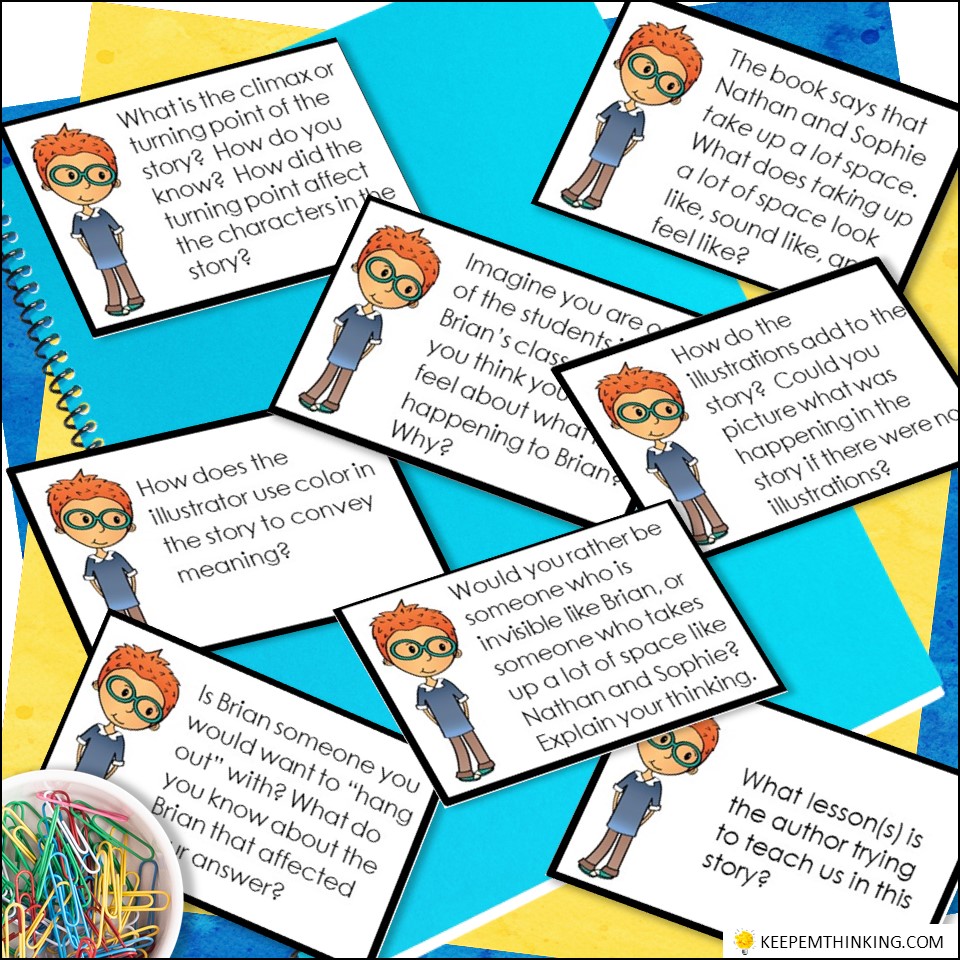
While reading the book aloud, I like to stop and ask the class how Brian is feeling during different parts of the book. I usually stop a few pages in at the beginning so we can discuss how Brian feels lonely and why he feels that way. Then again when Justin enters the story and begins to interact with Brian. Finally, we talk about Brain’s feelings at the end, once Justin and Brian have created a strong friendship.
After reading, I challenge my students to look for others who might be feeling left out and encourage them to create connections with students that they have not before. It always amazes me to watch their awareness grow as they foster new relationships after one simple read-aloud!
Be sure to grab this amazing The Invisible Boy Literature Guide in the Keep ’em Thinking TPT store! It’s the perfect companion for this fantastic book.
Hey, Little Ant: A Concrete Way to Teach Empathy
When I start introducing the concept of empathy to my students, I like using Hey, Little Ant by Phillip Hoose and Hannah Hoose and illustrated by Debbie Tilley. This story begins with a young boy finding an ant on the sidewalk. He raises his foot to squish the ant, but to his surprise, the ant speaks up to tell the boy why he should get to live instead of being squished.

The book is lighthearted and even humorous but at the core it makes the reader think about what would it be like if roles were shifted and they were someone different. In this case, what if the boy was the ant? How would he be feeling?
I love the setup of this book because it defines empathy easily. How would you feel if you were in someone else’s shoes?
The boy in the story is challenged to look at the world from a perspective that he has not before.
Ways to Use Hey, Little Ant in Your Classroom
The book ends with the question, “What do you think the kid should do?” making it the perfect springboard for a discussion of empathy!
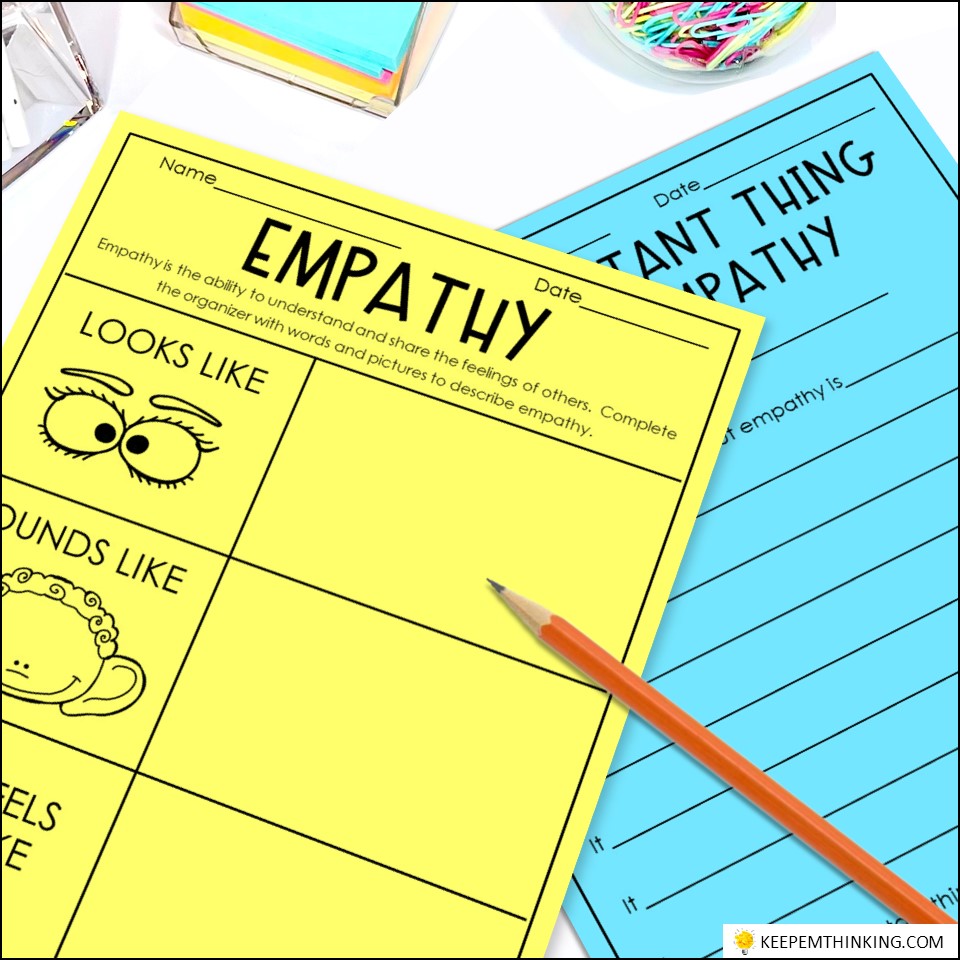
I begin the read-aloud by asking my students to write down what they would do if they came across an ant on the sidewalk. Then I ask them the same question at the end. We talk about their original answers, their new answers, and why some of their ideas might have changed. From there, we move on to the question from the end of the book about what the kid should do.
Finally, I challenge students to stop and think about someone else’s perspective at least once that day. I tell them to ask themselves, “How will this hurt or help the person?” or “How would I feel if someone did what I’m about to do to me?” Students love sharing their experiences the next day, and I love that they are learning empathy without too much leg work from me!
Need Help Teaching Empathy?
Picking the right books can help make teaching empathy a breeze, but having paired activities for those books makes it even more powerful!
Grab the Somebody Loves You, Mr. Hatch Literature Guide, and The Invisible Boy Literature Guide to help you kick start the exploration of empathy in your classroom while still teaching important reading skills!
And don’t forget to grab your free Friendship activity from the Keep ’em Thinking Free Resource Library.
Save these Tips and Ideas for Teaching Empathy
Pin this to your favorite classroom Pinterest board, so you can come back when you are ready to tackle some social emotional learning in your classroom.
